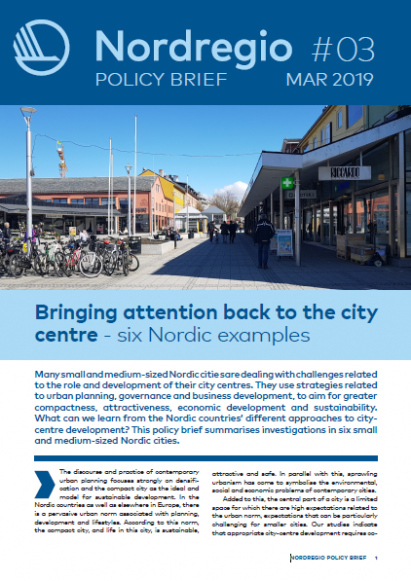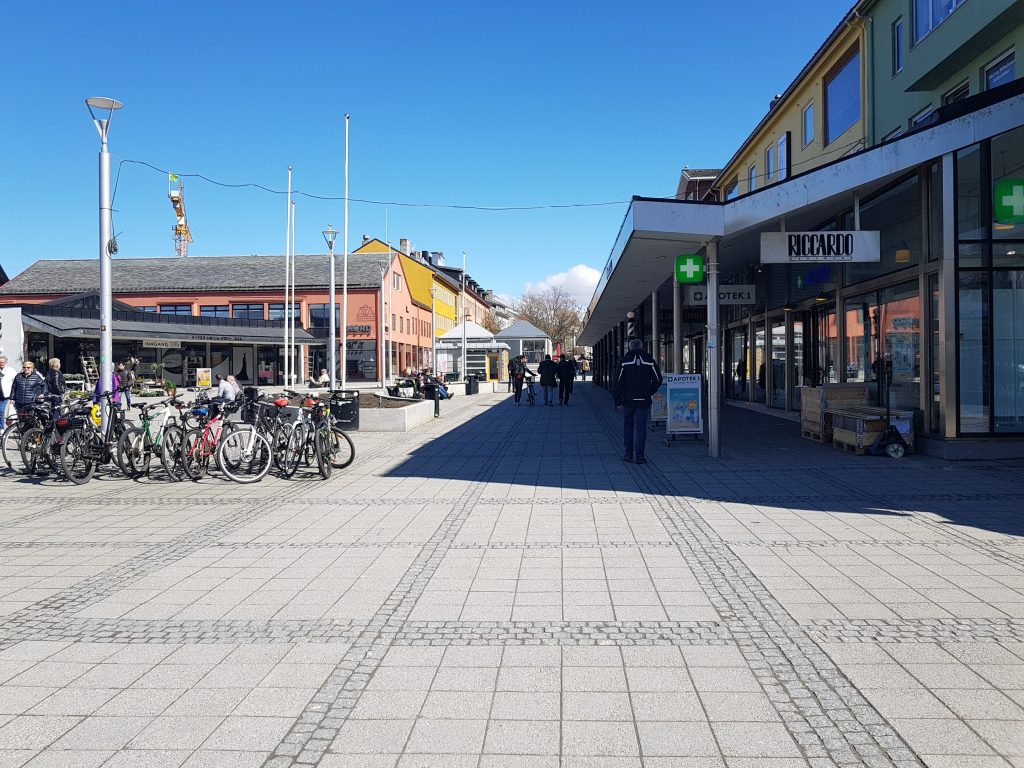Many small and medium-sized Nordic cities are dealing with challenges related to the role and development of their city centres. They use strategies related to urban planning, governance and business development, to aim for greater compactness, attractiveness, economic development and sustainability. What can we learn from the Nordic countries’ different approaches to city-centre development? This policy brief summarises investigations in six small and medium-sized Nordic cities.
The discourse and practice of contemporary urban planning focuses strongly on densification and the compact city as the ideal and model for sustainable development. In the Nordic countries as well as elsewhere in Europe, there is a pervasive urban norm associated with planning, development and lifestyles. According to this norm, the compact city, and life in this city, is sustainable, attractive and safe. In parallel with this, sprawling urbanism has come to symbolise the environmental, social and economic problems of contemporary cities.
Added to this, the central part of a city is a limited space for which there are high expectations related to the urban norm, expectations that can be particularly challenging for smaller cities. Our studies indicate that appropriate city-centre development requires co-operation across sectors and actors, recognition of the regional role of the city core, and investment in both the city centre and its periphery to create a balance that attracts residents, visitors and consumers.
The policy brief summarises a project funded by the Nordic Council of Ministers’ Nordic Thematic Group on Sustainable Cities and Urban Development.
The Nordic Thematic Group for Sustainable Cities and Urban Development 2017–2020 aims to help improve national, regional, local and cross-border strategies for sustainable cities. This is done via research projects and other communicative activities, addressing the following themes from the Nordic Co-operation Programme for Regional Development and Planning: 1) social sustainability and gender equality; 2) spatial planning; 3) urban qualities in small and medium-sized cities, and the urban-rural relationship; and 4) the growth and development of Arctic cities.








